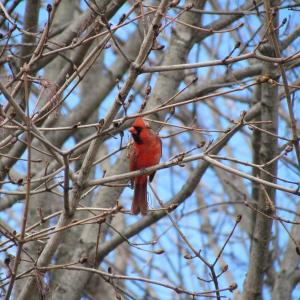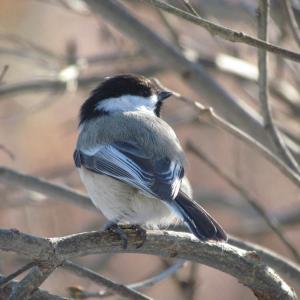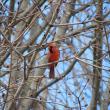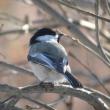Is a Bird Song More than it Seems?
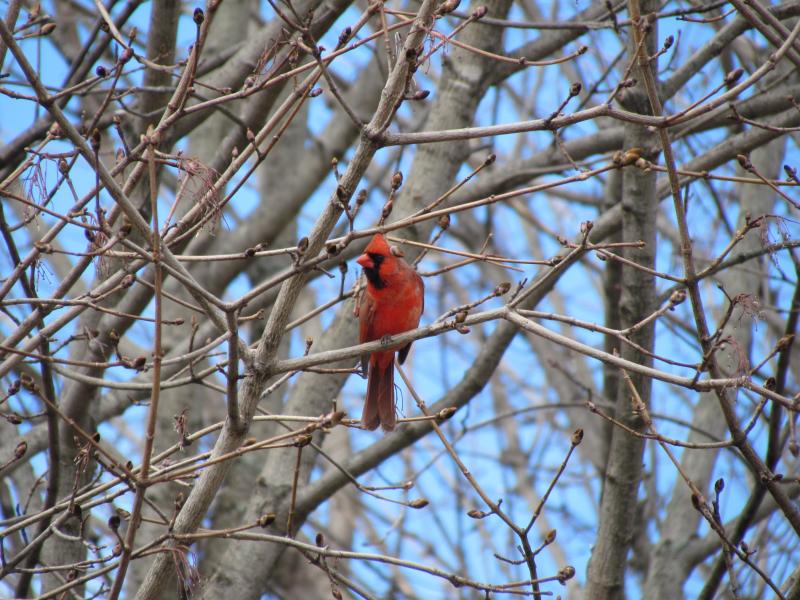 The loud "cheer, cheer" song of the northern cardinal can already be heard ringing out in many parts of Maine despite the cold temperatures. But do they have a deeper meaning? Courtesy of Jeff and Allison Wells
The loud "cheer, cheer" song of the northern cardinal can already be heard ringing out in many parts of Maine despite the cold temperatures. But do they have a deeper meaning? Courtesy of Jeff and Allison Wells
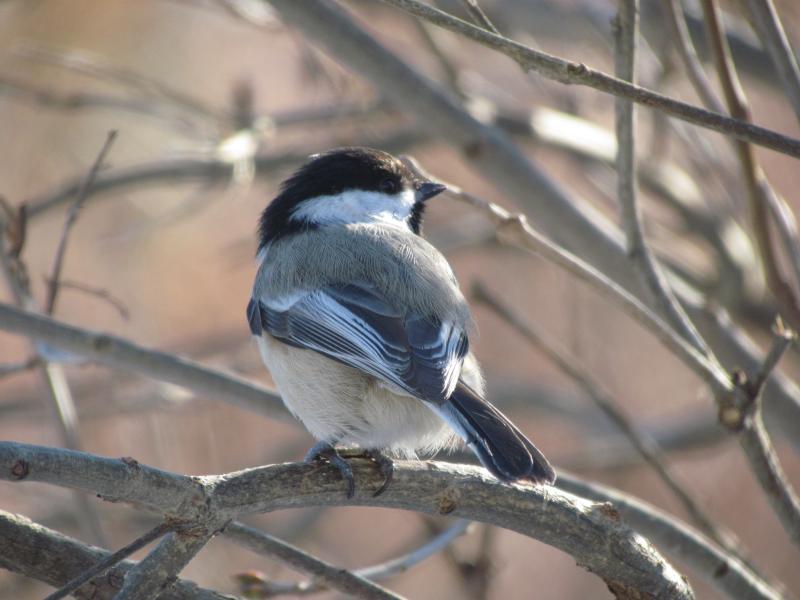 Maine's state bird, the black-capped chickadee, has a simple "fee-bee" whistled song that reminds all that spring is on the way—and could suggest findings from recently published research into bird song. Courtesy of Jeff and Allison Wells.
Maine's state bird, the black-capped chickadee, has a simple "fee-bee" whistled song that reminds all that spring is on the way—and could suggest findings from recently published research into bird song. Courtesy of Jeff and Allison Wells.
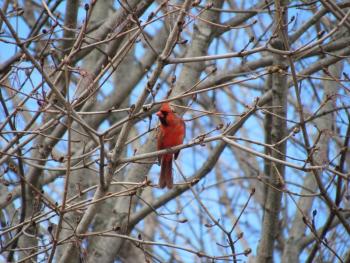 The loud "cheer, cheer" song of the northern cardinal can already be heard ringing out in many parts of Maine despite the cold temperatures. But do they have a deeper meaning? Courtesy of Jeff and Allison Wells
The loud "cheer, cheer" song of the northern cardinal can already be heard ringing out in many parts of Maine despite the cold temperatures. But do they have a deeper meaning? Courtesy of Jeff and Allison Wells
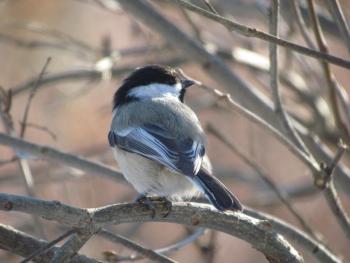 Maine's state bird, the black-capped chickadee, has a simple "fee-bee" whistled song that reminds all that spring is on the way—and could suggest findings from recently published research into bird song. Courtesy of Jeff and Allison Wells.
Maine's state bird, the black-capped chickadee, has a simple "fee-bee" whistled song that reminds all that spring is on the way—and could suggest findings from recently published research into bird song. Courtesy of Jeff and Allison Wells.
It was winter the way we expect it here in Maine. The sun was shining and the sky blue, but the morning cold was intense, making the slightest breeze feel sharp and painful on any uncovered part of the face. Our little dog, Loki, despite two layers of clothing, would get just a short walk, for the safety of all of us on such a day.
And yet, there, despite the skin-numbing cold, echoing around the neighborhood was the “cheer, cheer, cheer” song of the cardinal. Just up the block, a tufted titmouse song rang out as well: “peter, peter, peter.”
When the temperatures moderated just slightly and our neighborhood dog walks could stretch another block or two, heard even more singing birds—long warbles of house finches, “fee-bees” of black-capped chickadees, even the “tea-kettle, tea-kettle” of our local Carolina wren.
Hearing such avian music in the cold winter months is uplifting to the human spirit.
Why?
For us (and we suspect most people), these songs are an affirmation of the coming spring and the rebirth of life it represents as trees leaf out, butterflies and bumblebees and birds return to the landscape, and the cycle of new beginnings restarts.
That doesn’t mean we don’t relish the beauty and challenge of winter. For birders, of course, winter brings many birds we can’t see any other time—harlequin ducks, snowy owls, Iceland gulls, not to mention an exceptionally rare Steller’s sea-eagle!
But still, humans seem to have built into our DNA a yearning for the longer days and signs of spring that come as we pass through the winter solstice. It makes sense if one thinks back to the hardships that humans living in cold northern climes endured during the winter months, when cold and snow and the challenges of finding food made simple human life a struggle.
Birds, too, must endure the hard conditions of winter. Their songs this time of year may give us people a vision into the future warm spring to come, but what do they do for the birds themselves? The scientific mind would say that these bird songs are expressions of territoriality to ensure that others of the same species will stay out and respect the turf of the singer.
And that is undoubtedly true.
But is it also possible that there is some universality in how living things on this planet proclaim and find hope in the truth of the return of light and warmth after the cold northern winter?
Recently published research has shown that there appears to be a universal mathematical law that is common to both human music and the songs of birds and other animals. The researchers suggest that this is because evolution has shaped the brains of all animals that make and listen to sounds to be sensitized to the patterns embodied by certain structural components of natural sounds. This heady research used bird sound recordings from the Macaulay Library at the Cornell Laboratory of Ornithology for much of the analyses, including dozens of recordings by our friends and colleagues as well as many from historical figures in ornithology like Arthur Allen (founder of the Cornell Lab of Ornithology), Peter Paul Kellogg, William Gunn, and Ted Parker among others. Somehow it seems especially fitting that a potpourri of bird sound recordings made from the 1950s to today, and from hundreds of people, was used to help shed light on such a core understanding of the shared experience of animals and sounds.
Maybe a bird song heard on a cold winter day that brings a spark of joy and hope is rooted far deeper than we know. Maybe, for birds, too, a song is more than it seems.
Jeffrey V. Wells, Ph.D., is a Fellow of the Cornell Lab of Ornithology and Vice President of Boreal Conservation for National Audubon. Dr. Wells is one of the nation's leading bird experts and conservation biologists. He is a coauthor of the seminal “Birds of Maine” and author of the “Birder’s Conservation Handbook.” His grandfather, the late John Chase, was a columnist for the Boothbay Register for many years. Allison Childs Wells, formerly of the Cornell Lab of Ornithology, is a senior director at the Natural Resources Council of Maine, a nonprofit membership organization working statewide to protect the nature of Maine. Both are widely published natural history writers and are the authors of the popular books, “Maine’s Favorite Birds” (Tilbury House) and “Birds of Aruba, Bonaire, and Curaçao: A Site and Field Guide,” (Cornell University Press).

